We all do what we can to make our yards and gardens look their best. Our landscapes are the first things that visitors encounter, and they, therefore, represent us and provide a first impression. On top of that, a well-tended and beautiful garden with lots of small trees and brilliant blossoms lightens our hearts every time we look at it.
That’s why it’s crucial to include trees in our gardens, even when we don’t have much room. Tiny trees for small spaces add color and texture to any backyard or garden. In this guide to trees for small backyards, we take a look at a wide variety of trees.
We show you slow growing trees that stay small, low-maintenance trees that fit into small spaces, and fast-growing flowering trees. We also take a look at dwarf varieties of citrus trees that add bright green leaves and gorgeous colors and scents to outdoor spaces.
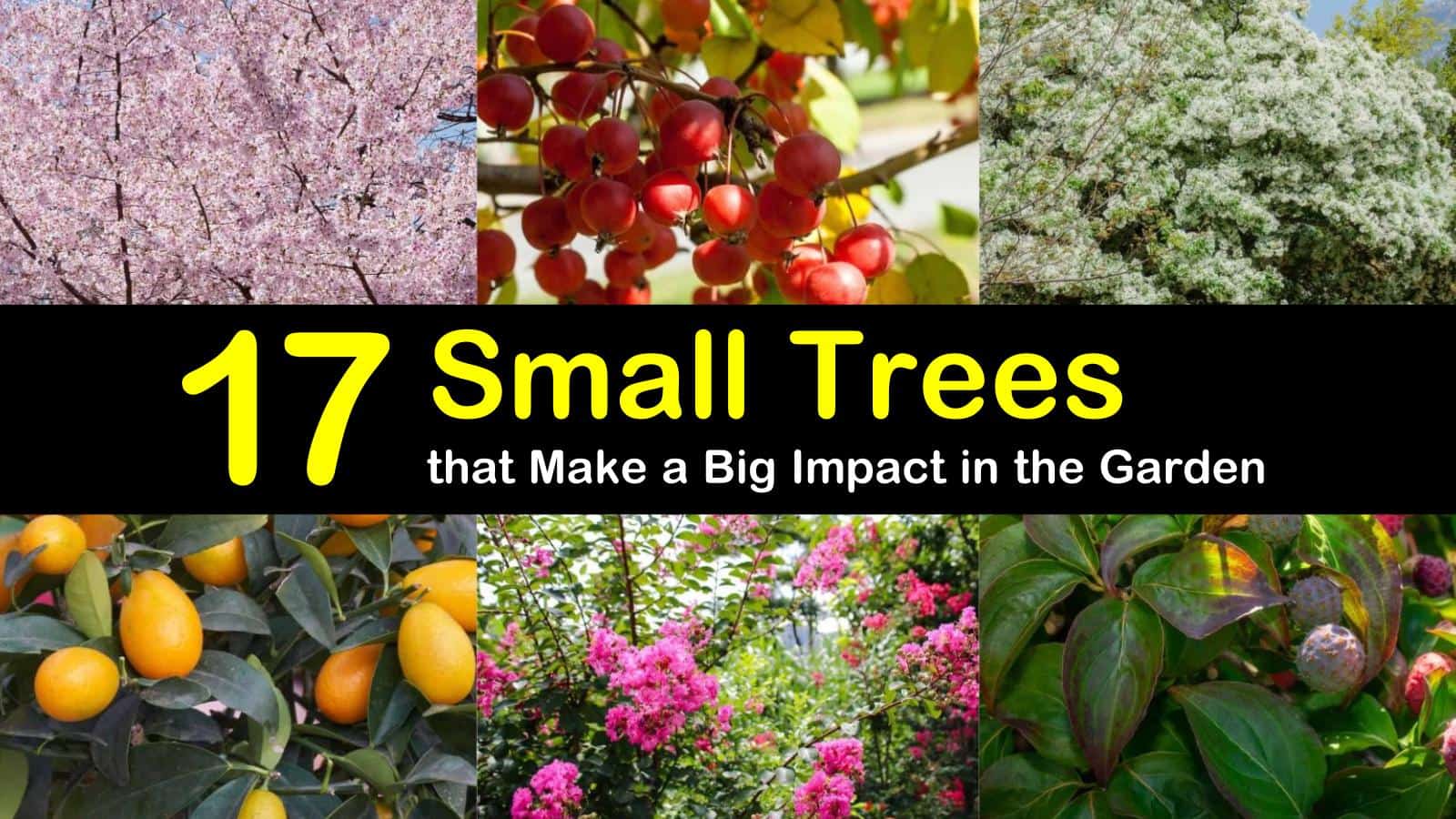
- When Should I Plant My Tiny Trees for Small Spaces?
- How Do I Grow My Trees for Small Backyards?
- How Do I Care for My Small Trees?
- Yoshino Cherry (Prunus x yedoensis)
- Kumquat (Citrus japonica) – Excellent Small Trees
- Chaste (Vitex agnus-castus)
- Clementine (Citrus Clementina)
- Fringe (Chionanthus virginicus) – Great Tiny Trees for Small Spaces
- Tangerine (Citrus tangerina)
- Japanese Maple (Acer palmatum) – Perfect for Small Backyards
- Zuni Crape Myrtle (Lagerstroemia indica)
- Crabapple (Malus)
- Key Lime (Citrus x aurantiifolia) – Tiny Tree with Big Flavor
- Redbud (Cercis canadensis)
- Owari Satsuma (Citrus reticulata)
- Kousa Dogwood (Cornus kousa) – Lovely Small Tree
- Calamondin Orange (Citrus microcarpa)
- Serviceberry (Amelanchier) – Great Tree for Small Yards
- Meyer Lemon (Citrus x meyeri)
- Bearss Lime (Citrus latifolia)
When Should I Plant My Tiny Trees for Small Spaces?
We delve into trees best suited for the cold-weather USDA hardiness zones and cover small trees that thrive in hot weather. Before you know it, your garden will amaze your friends and family!
If you’re adding potted trees like dwarf citrus varieties to your garden, keep the containers inside until the local weather is amenable to your trees. Transfer them outside to their garden homes if you’re planting a tree in the garden permanently, and plant as early as possible in the growing season to give your trees their best chance to do well.
Contact your local agriculture agency for the latest information on any quirks or pointers that apply to your climate conditions. If everything looks good, plant after the season’s last frost. Try to pair your small trees with interesting plants for increased curb appeal.
How Do I Grow My Trees for Small Backyards?
Your trees require varying degrees of sunlight or shade, so make sure you’re meeting each tree’s needs before you plant. Use soil moisture gauges if you’re concerned about soil drainage, but again, keep in mind that different plants require different soil types and drainage, so check your trees’ requirements.
Keep an eye on your soil pH as well, as you might need to adjust its acidity to make one of your trees happier. Trees, citrus trees in particular, like nitrogen-rich soil. If you’re planting a citrus tree, pre-treat the earth or potting container with specially designed citrus tree fertilizer.
Check the care requirements for other tree types to see if they require fertilizer. If you’re planting a tree in the ground, make the hole as deep as the pot and twice the width.
How Do I Care for My Small Trees?
Caring for small dwarf trees is similar to the way you watch over larger specimens. Be aware of temperature, sunlight, and water for all your trees. Citrus trees generally do best in as much sunlight as you can send their way, so move them to a sunnier part of the garden if they seem unhappy.
If one of your potted trees needs more sun than your current conditions can provide, consider bringing it inside for sun time under a grow light until the weather improves. Many trees require little to no additional water, but try to deep water your citrus trees, and let the roots get a nice soak when doing your watering.
And, if you have a pest problem, consider using a home remedy to address the issue. An apple-cider vinegar trap, for instance, is an excellent way of getting rid of fungus gnats.
Amend the soil as needed with composting material periodically and check to be sure that you don’t have issues with blight or other conditions that may affect your trees. Quickly addressing problems will keep your trees healthy and long-lasting.

Beautiful Small Trees for Your Backyard
While you add a tree or two to your space, don’t forget about other plants, too. Consider small ornamental grasses, shrubs, perennials and annuals, as well as hanging plants to add variety and interest throughout the area.
Yoshino Cherry (Prunus x yedoensis)
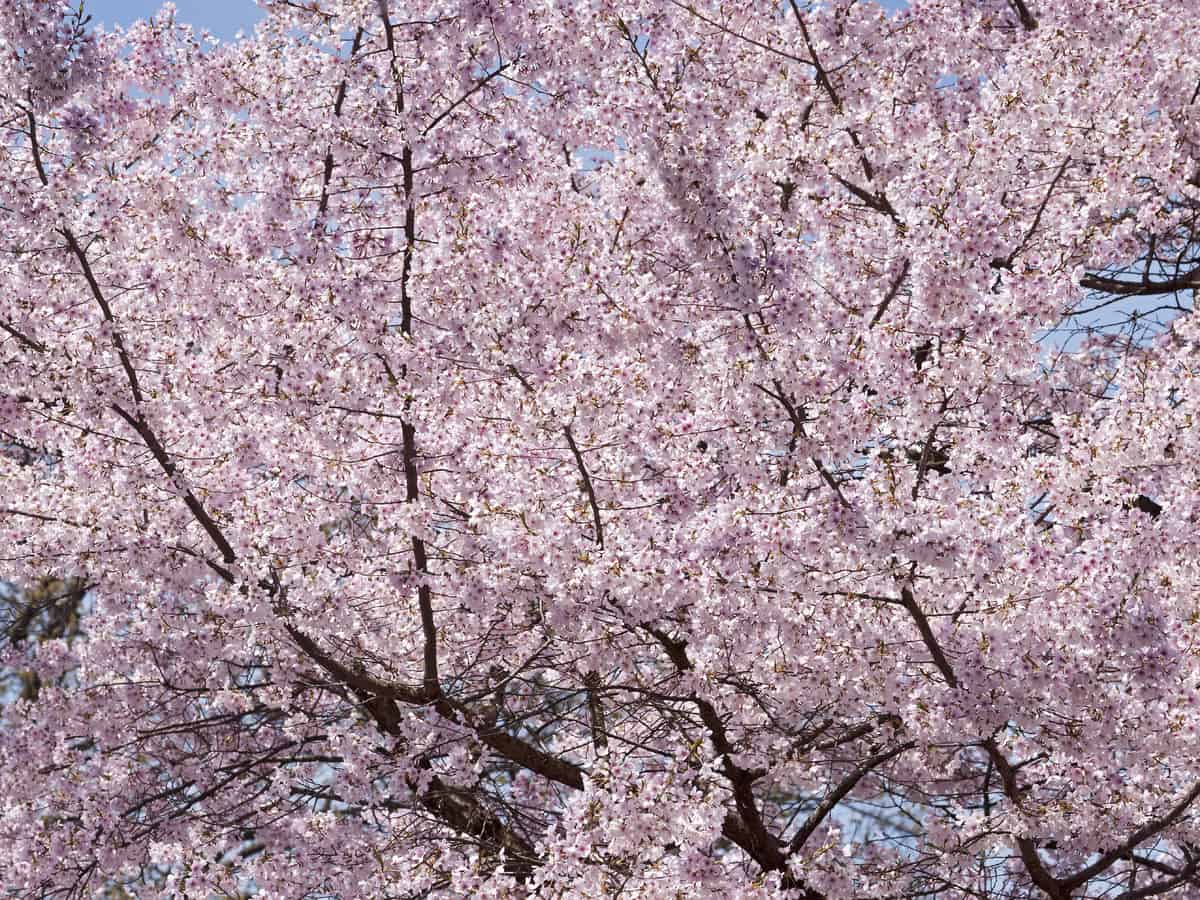
If you’ve traveled, you’ve probably run across Yoshino cherry trees lining downtown streets in many American cities. These hardy flowering trees hail from China originally and are relatively slow growing.
They grow a few feet a year and top out at no higher than 25 feet when mature. The Yoshino cherry tree has a hardy disposition that makes it ideal as a border tree, but what makes this small tree stand out is its blossoms.
If you like spring flowers, you’re in luck; your yard will explode into color as the Yoshino cherry bursts into spectacular white and pink flowers. Your garden will shine when you add this tree.
Kumquat (Citrus japonica) – Excellent Small Trees
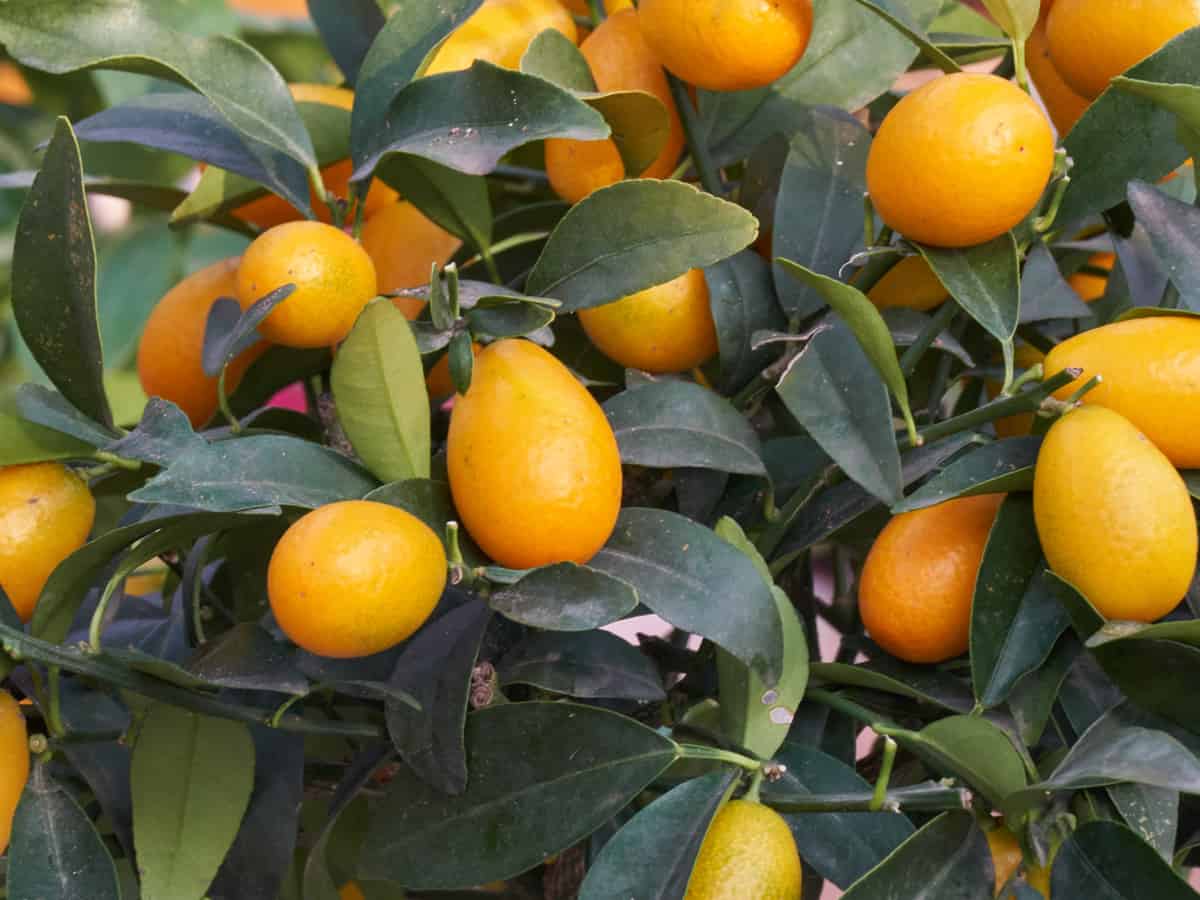
Kumquat trees look very similar to orange trees, but they produce much smaller fruit with thinner skin (but still delicious!). The fruit is both tart and sweet and makes a lovely jam or you can eat it after peeling off the thick skin.
These simple fruit trees are native to Asia, and people have cultivated them for centuries. Your garden will thank you when you add a kumquat tree, and the air will fill with a delightful scent.
The kumquat is one of the best citrus trees for northern climates and can tolerate temperatures down to 20°F. This means that folks in the southern United States and Europe can plant kumquats in the ground and give them permanent homes in their gardens.
While the kumquat tree thrives outdoors, it is also possible to plant these fruit trees for pots to keep inside your home. No matter where you plant this citrus tree, be sure to give your kumquat tree plenty of sunlight.
Chaste (Vitex agnus-castus)
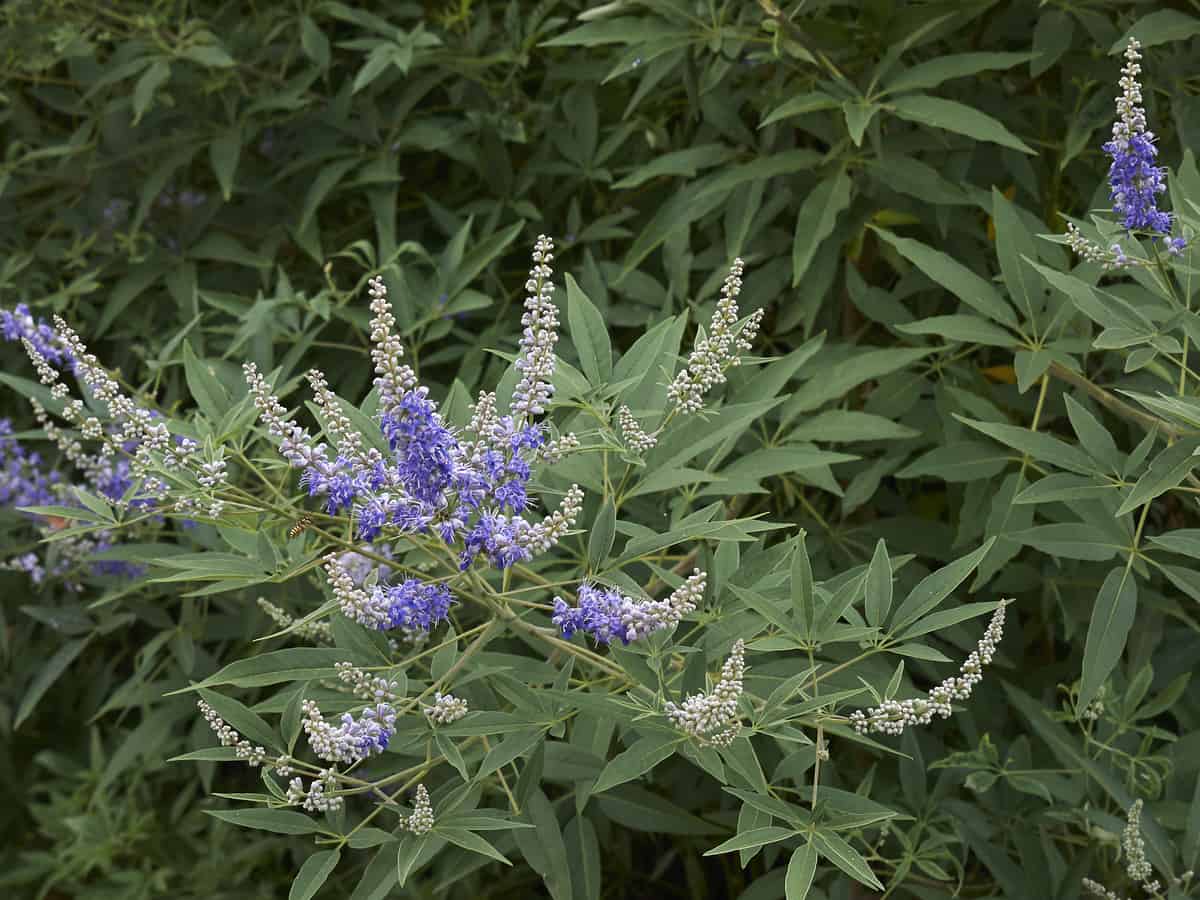
When you’re looking for a large shrub to add color to your garden, you can’t do better than the chaste tree. This evergreen shrub grows 15 to 20 feet tall, spreads 10 to 15 feet, and its narrow green leaves fill your landscape with color.
Use this beautiful specimen as an evergreen tree for privacy no matter what the size of your yard. The chaste tree blooms in late spring and continues to show its long spikes of lilac, pink, and white flowers until late summer.
Plant chaste trees in soil with good drainage and full sunlight. Unlike some of the other trees we cover, the chaste tree rarely requires extra water, but check the soil from time to time.
Don’t use organic bark or wood-based mulch on chaste trees. If you get a cold snap, don’t panic; your chaste tree will regrow from its roots.
Clementine (Citrus Clementina)

Dwarf trees have been increasing in popularity for some time, and nowhere is that more evident than in the profusion of dwarf orange trees. When looking for a tiny tree for small spaces that will not only improve your garden but give you sweet, orange-red fruit, the clementine orange tree might be just what you need.
The clementine is drought tolerant and heat tolerant, and you won’t believe how delicious and easy to peel your family will find its almost-seedless fruit. Place these trees for small backyards anywhere you have a little sun, and they’ll reward you with fantastic color and a fresh scent.
Fringe (Chionanthus virginicus) – Great Tiny Trees for Small Spaces

It’s always great to run across a small tree that doesn’t mind cold weather, which makes the fringe tree such a pleasure. Plant a fringe tree anywhere in the United States except for Southern Florida, and you won’t regret doing so.
These robust little trees for small yards top out at ten to 20 feet, so they’re perfect trees for small spaces. While the fringe is at home in many challenging conditions, it doesn’t tolerate street salt or dry, hardened soil, so avoid using it as a roadside tree.
The tree produces delicate white flowers that are susceptible to weather, so plant the tree in a sheltered spot to protect its blossoms.
Tangerine (Citrus tangerina)

A tangerine tree is an excellent option as a small tree for your backyard or garden, especially if you live in a hot climate. The tree is a hybrid created from a mandarin orange, and it produces white and yellow flowers and yields sweet, orange fruit with firm flesh and intense flavor.
Anyone who has children are likely very familiar with how much young ones clamor for tangerines, and the tree is a perfect tree for front yard areas and patio displays. Be patient with tangerine trees, as they are slow growing and take a while to mature.
You’ll start getting fruit from your tangerine tree about a year and a half after you plant it. If you live in a warm and tropical climate, plan on getting year-round fruit from your tangerine tree.
Japanese Maple (Acer palmatum) – Perfect for Small Backyards
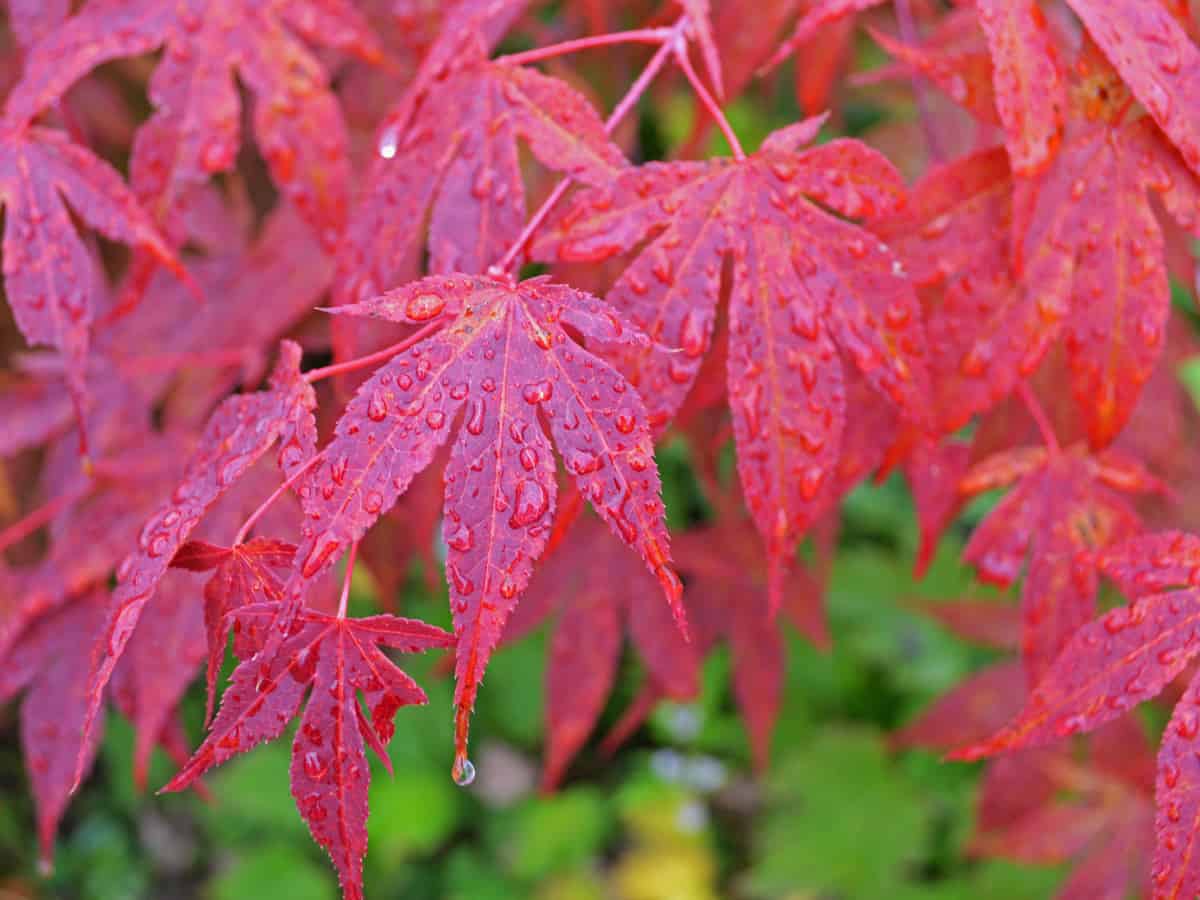
Most gardens benefit from a splash of color, and there’s no better tree to give you that color than the Japanese maple. This maple variety is a sturdy little tree and is perfect for moderate to cold climates, as it can tolerate even more frigid weather than other types.
You’ll get incredible purple flowers all spring when you plant a Japanese maple. The Japanese maple works well as a border plant, and they’re happy either in the ground or in large containers.
Plant the tree in the sun if you have no other choice, but try to keep your Japanese maple in part shade if possible to avoid scorching its leaves. These are amazing small trees for front yard areas, as well as for the backyard.
Zuni Crape Myrtle (Lagerstroemia indica)

The best trees for small backyards are versatile. They can be used in many different ways and always improve your landscape.
The Zuni crape myrtle, also called crepe myrtle, is one of the best such trees under 10 feet; you can use it as a border plant, as a part of a larger display, or even as a display of its own. Every year, the Zuni crape myrtle fills any space with stunning, bright pink flowers.
Plant the Zuni myrtle in a hot climate, and be sure to put it in a sunny spot. Don’t forget to verify that the crepe myrtle can survive in your local weather conditions, as they can be picky. Water your myrtle regularly, and don’t forget to prune it once a year.
Crabapple (Malus)

When you think about which small trees to include in your garden, display times need to be a consideration. The longer a tree has a colorful display, the better it will make your garden look, which is what makes the crabapple tree one of the best tiny trees for small yards.
Crabapples not only produce white and pink buds every spring, but they are trees that attract butterflies and also offer year-round colors with their red fruits. The fruit sticks around for fall color and doesn’t drop until well into late winter.
Plant your crabapple tree in soil with good drainage. While you can plant your crabapple tree in either sun or part shade, it prefers sunlight and will produce a much thicker and more beautiful canopy in full sun.
Key Lime (Citrus x aurantiifolia) – Tiny Tree with Big Flavor
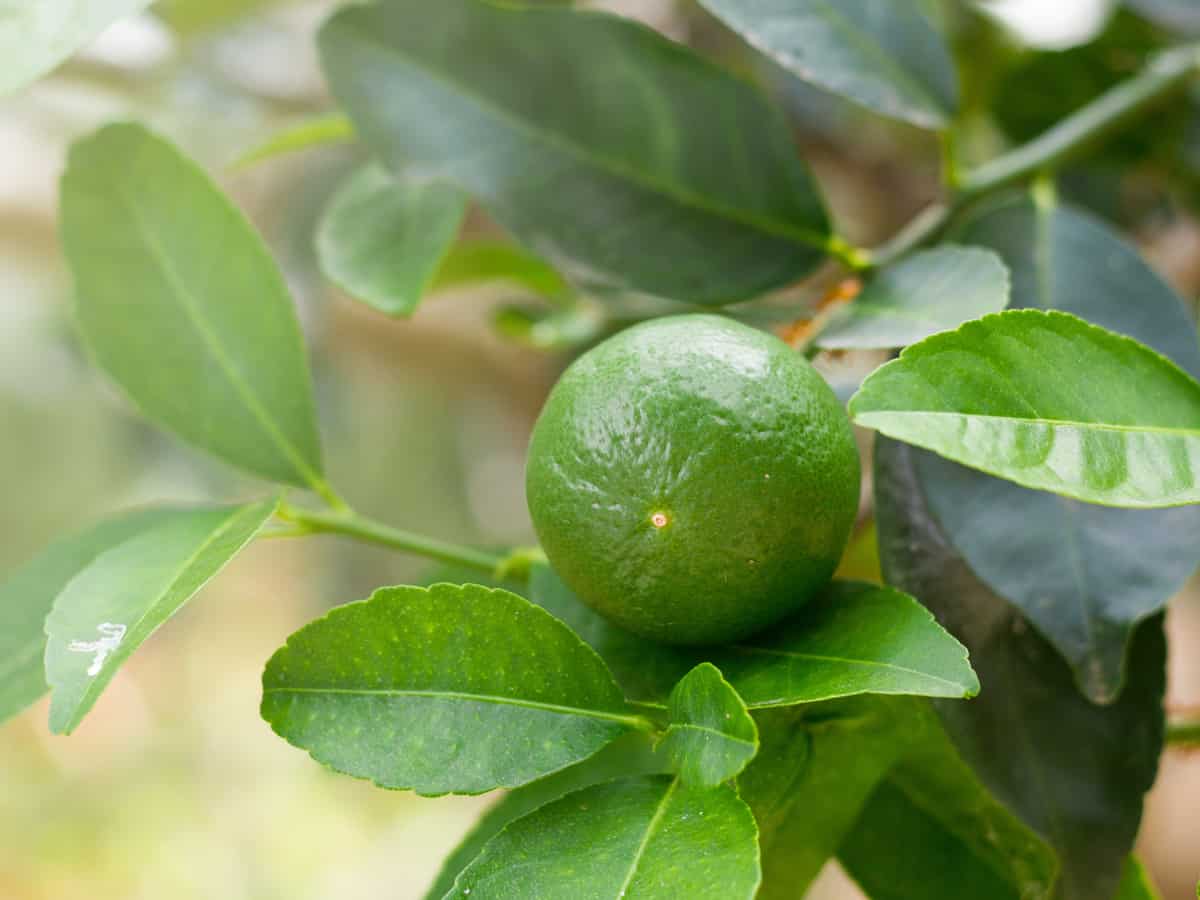
The key lime, also called the Mexican lime, is a favorite of pastry chefs and margarita aficionados alike. You’ll find these bushy little trees all over Southern Florida and California and in tropical islands across the Caribbean.
The key lime tree stays short and squat and produces dark green fruit that has a tart, astringent flavor that works well in all sorts of dishes and drinks. You’ll get multiple blooms when you own a key lime tree, so get ready for a staggered harvest and a long fruit season!
Redbud (Cercis canadensis)
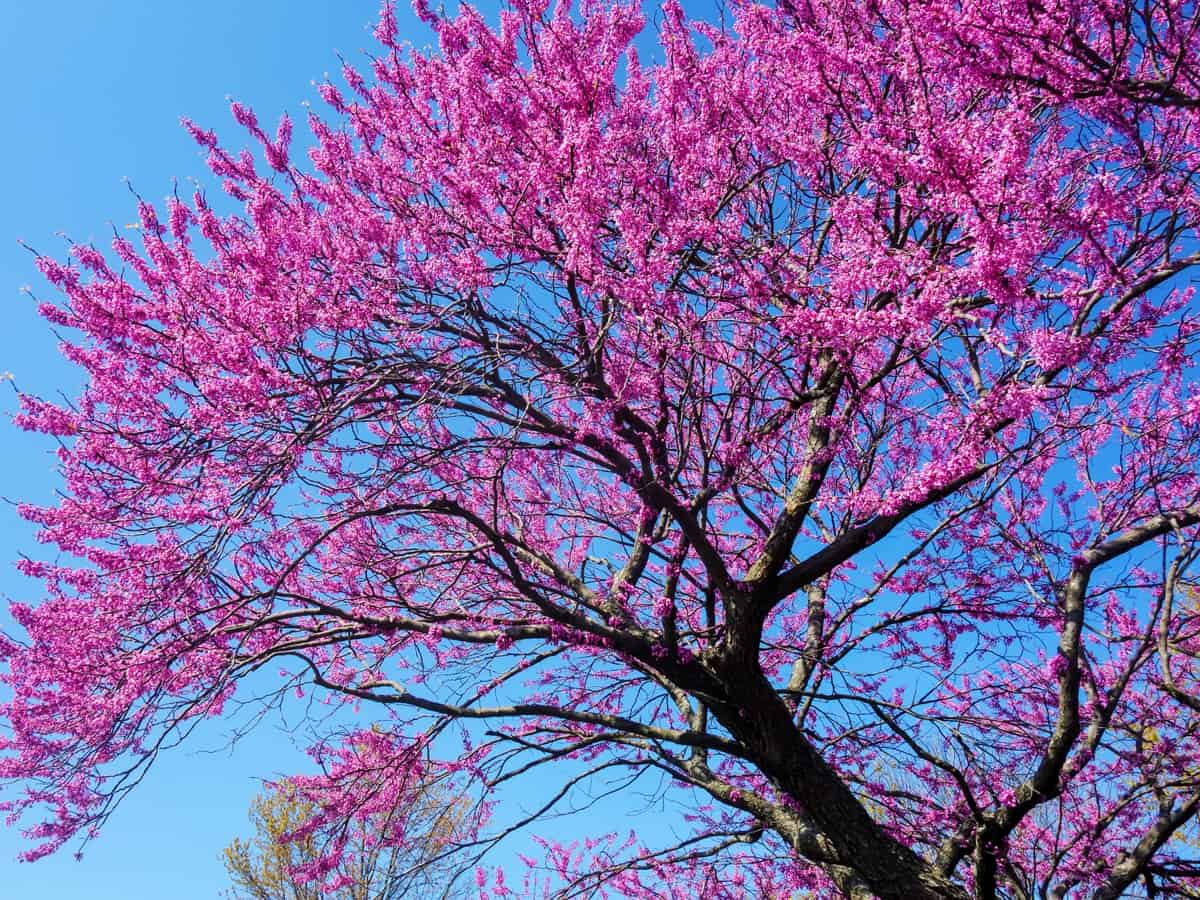
Color variety is the key to an impressive garden display. Your garden will have plenty of greens and browns, but splashes of orange or red flowers add the finishing touches to an enclosure, which makes the redbud tree, also called the Judas tree, perfect for a small yard. These hardy trees originate in the eastern United States, but they’ll do well in any garden in USDA hardiness zones 4 through 8.
Plant your redbud tree in the early spring. Give the new tree plenty of shade, and check the soil frequently to ensure that it drains well, as the redbud can’t tolerate sodden roots. Pair your redbud with a plant or tree that produces fall foliage for added impact.
Owari Satsuma (Citrus reticulata)
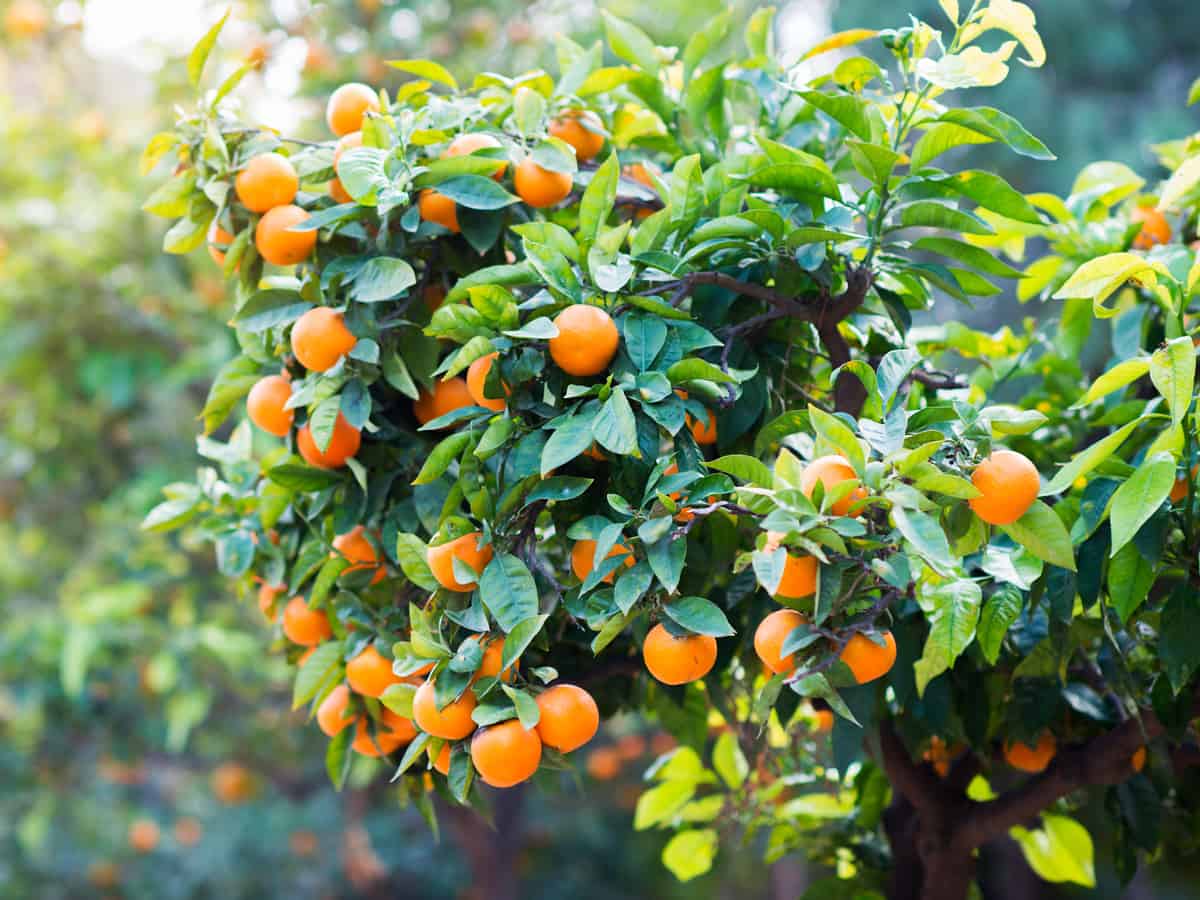
It’s hard to find a dwarf tree that can survive the cold and still bear citrus fruit, but the Owari satsuma tree does just that. These small tree plants can survive in the ground throughout much of the lower United States, and it produces juicy, sweet fruit in abundance.
The Owari Satsuma is famous for its ability to grow in most environments, so plant it and get out of its way. This tree is better at fighting off pests and disease than most trees, and it requires little maintenance or pruning.
Kousa Dogwood (Cornus kousa) – Lovely Small Tree

The Kousa dogwood tree will make your garden stand out and will astound your family with its display. This beautiful tree, with its bright green leaves, white flowers, and long strips of peeling bark, can’t help but draw the eye and makes an excellent centerpiece to any small yard. The large branches and full canopy make any space a little more special.
Your dogwood will grow upward when it’s young, but it will begin to produce long, horizontal branches as it matures, so make sure to give the tree enough surrounding space to grow when you plant it.
Calamondin Orange (Citrus microcarpa)
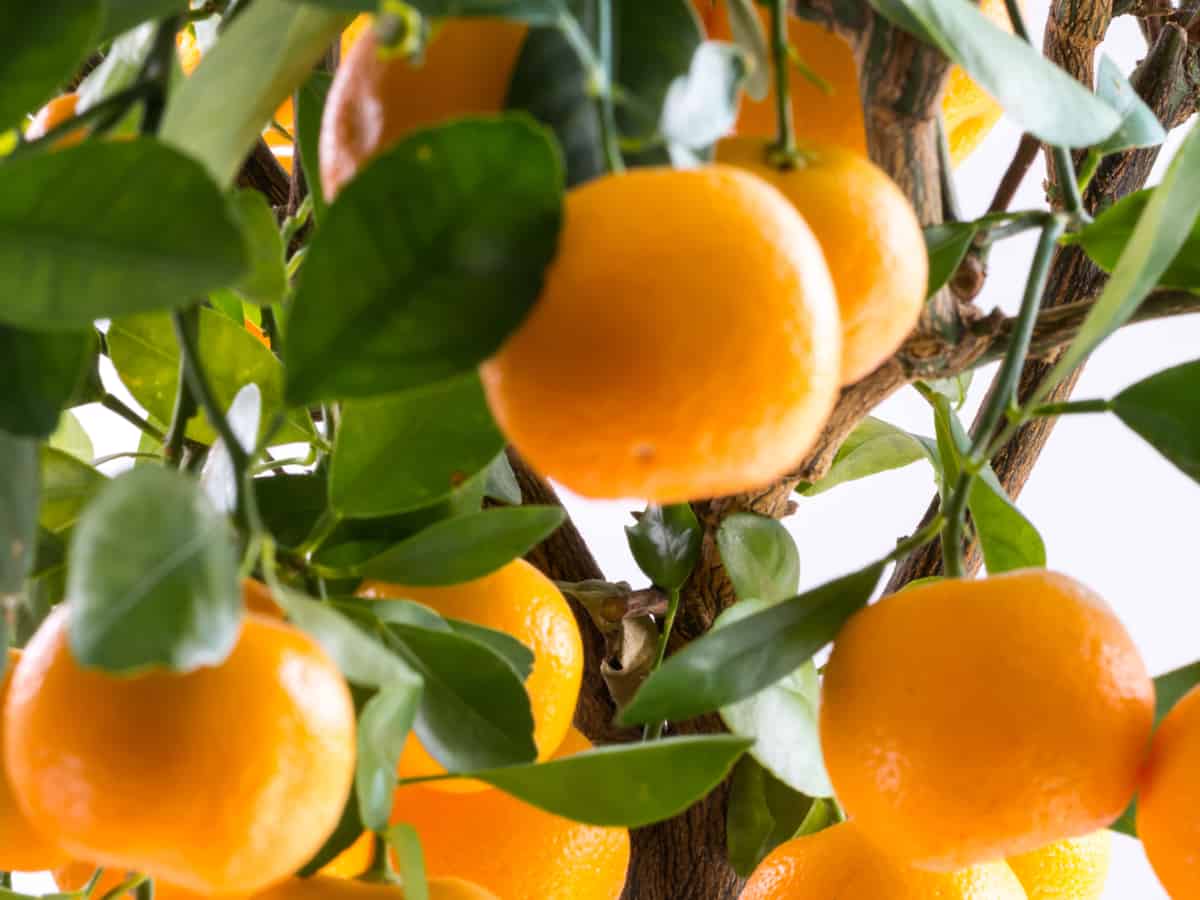
For a tree that gives your garden color and pizzazz and also rewards you with year-round fruit, you can’t do better than a calamondin orange tree. This fast-growing tree is low maintenance for a citrus tree and yields fruit that falls somewhere between a kumquat and an orange, with an unusual and pleasant texture and unique tangy flavor.
The calamondin orange tree is excellent for keeping gnats and other insects out of your garden, so try to pair it with vegetables or other plants that could use some pest control. Plant your calamondin orange tree in full sun.
It’s always hard to wait for a tree to bear fruit. Since this orange tree is one of the quick growing trees, this means you’ll have delicious fruit even sooner! As it grows, you’ll enjoy the pleasant citrus scent from the oranges, while being able to sit outside nearby without worrying about annoying bugs.
Serviceberry (Amelanchier) – Great Tree for Small Yards

If you live in the extreme north, there are some excellent options for small trees for your garden that still give you color and fruit, such as the serviceberry tree. The serviceberry is native to northern climates like Scandinavia and the Yukon, and they’ll do very well in a cold-weather garden.
You can grow serviceberries as either trees or bushes, and many serviceberry varieties produce a lovely, edible fruit. Give your serviceberry tree just enough water to moisten the soil, but don’t soak it. Your soil type dictates how often you need to water your serviceberry, as sandy soil requires more frequent watering than loam.
Meyer Lemon (Citrus x meyeri)

A beautiful garden isn’t just full of incredible sights; the best gardens offer a feast for all the senses. To give your yard or small garden a lemon scent that freshens any day, consider planting a Meyer lemon tree. These attractive little trees are an excellent choice for small spaces and, as a bonus, produce juicy lemons that are perfect for cooking.
Take good care of your Meyer lemon tree, and keep it watered and fertilized to make sure it stays happy and healthy. Don’t start pruning the tree until it has at least two years of growth, and then trim it regularly.
Bearss Lime (Citrus latifolia)
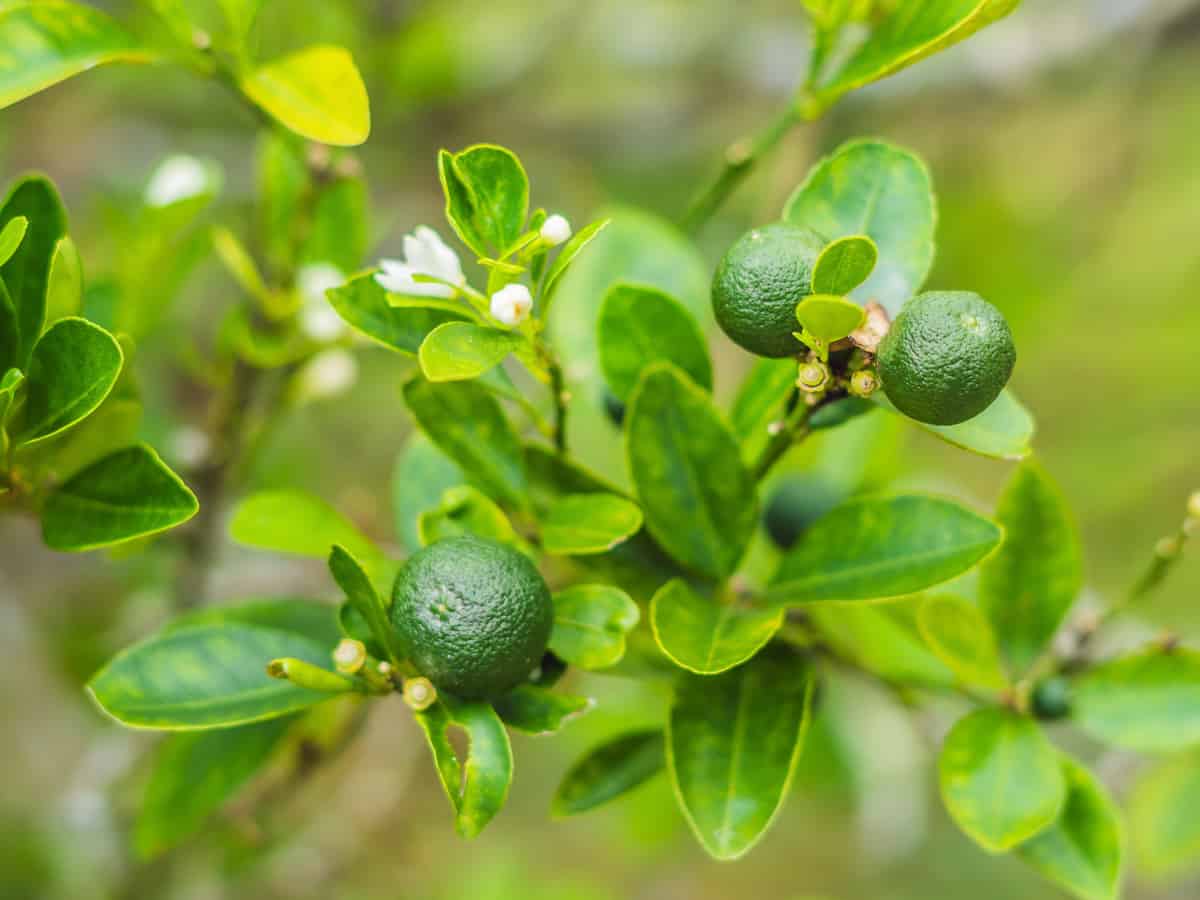
The Bearss lime, also called the Tahitian lime and the Persian lime, is a semi-dwarf tree that develops sweet-scented flowers and little green limes. The limes are almost seedless, which makes them perfect for beverages or cooking. Try them in your next marinade for a tart and tasty flavor treat.
Because the Bearss lime tree is a tough customer that can tolerate cold, plant it in the ground and keep it outside year-round in most southern and Pacific coastal regions such as California, Washington, and Oregon. If your local weather sees regular hard freezes, though, you’d be better off keeping your tree in a pot and bringing it inside as needed.
We hope you enjoyed our guide to small trees for front yard displays. There’s no better way to add class and beauty to small gardens and yards than with a small tree, and our information can help you find the perfect large shrub or dwarf tree for your needs. Soon, your home’s exterior will be a lush, colorful paradise.

Thank you for reading our guide to trees for small backyards. If you found our tiny trees for small spaces guide useful, we’d love it if you would share our small tree tips on Facebook and Pinterest.